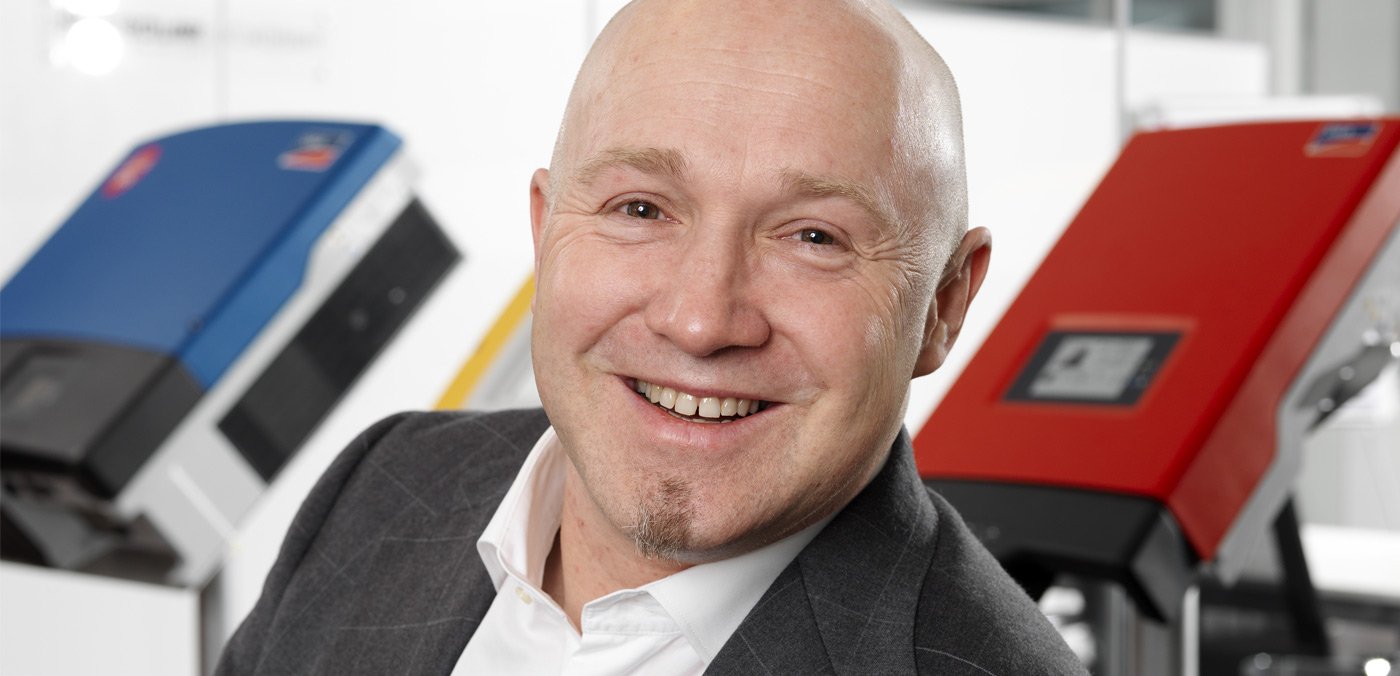The Photovoltaics Market in 2018

Interview with Jan Van Laethem, Regional Manager SMA Western Europe—West Africa, on the outlook for the photovoltaic market in Western Europe.
What is your assessment of SMA’s performance in the Benelux countries, in France and in the UK in 2017?
Despite some difficult market conditions and a shortage of components, 2017 was certainly a positive year. Performance in the UK was driven by the industrial storage segment. 18 months ago, we identified opportunities that would allow us to acquire a significant share in this high-potential market. We have had considerable success in Belgium and are benefiting from the boom on the residential and large-scale rooftop systems markets in the Netherlands. We have also had great success in France, primarily with tenders for the French Energy Regulatory Commission (CRE) and in the service segment with long-term service contracts. These are essential for power plants with a service life of 20-25 years in that they provide a form of quality assurance for these installations.
What is the state of play in the photovoltaic market in these three areas?
In France, one challenge lies in the implementation timelines for large-scale projects. In spite of this, all segments are set on a growth trajectory, although the residential segment remains small in relation to the potential on the French market. In the UK, even though subsidies have been abolished, the utility storage segment is really taking off. The first utility-scale power plants are now being built without subsidies. There are also high expectations with regard to large-scale rooftop storage systems. As regards the Benelux countries, Luxembourg has some lofty photovoltaic ambitions for the future. The Netherlands has considerable potential of more than one gigawatt per year, boosted by subsidies for large-scale rooftop systems. However, there are still challenges to be overcome with regard to funding and manpower. The situation is more complicated in Belgium because responsibility for the provinces is devolved to each region. In Flanders, growth in photovoltaics is being driven by various local initiatives like “shared rooftops.” Wallonia has put an end to residential subsidies. Large-scale rooftop system projects are thriving. All the governments support the development of photovoltaics, which generates positive momentum.
How is SMA positioned in these three markets today?
SMA operates across all segments—from residential and large-scale rooftop systems through to large-scale projects. We also cover all applications: self-consumption with or without storage systems. In the UK, we achieved the major feat of installing hundreds of megawatts in a period of just 12 months. SMA has a number of quick installation solutions, and we have a substantial installed base. Thanks to the new Sunny Tripower CORE1, SMA is extremely well-positioned to respond to requirements on the large-scale rooftop systems market. This highly flexible product was an instant success. In the large-scale power plant segments, with our SMA MVPS solution, which has an output of over 5.5 MW, we are able to install a power plant with a capacity of more than five megawatts in a single day. With ennexOS, our smart energy management solution, we have laid the groundwork for the future to enable our devices to communicate with their external surroundings and optimize decentralized energy production. This open and standardized solution will allow us to reach out to a number of actors searching for a solution to improve local energy exchange. We have opened a window on the world of tomorrow—digitalization is the key to everything.
What megatrends does the future have in store?
Data will be a central trend. For renewable energy sources, which are inherently decentralized, to develop successfully they must be connected. This is the key to success. Closed solutions will not work; open solutions are needed. Which is why we developed ennexOS. To interface with different energy flows, we need a communication base not only with our products but also with other consumers. Buildings fitted with PV modules can produce energy that is surplus to requirements at any given moment. This surplus of available energy can be consumed by other people or stored. We have established partnerships with other service providers with the aim of developing new business models in this area. Storage systems are set to grow across all segments, including the utility segment to ensure grid stability. However, this applies to the large-scale rooftop systems and residential segments as well. There is also considerable potential in repowering. Our products are adapted to the requirements of today’s market and we anticipate the developments of tomorrow. Our headquarters are a huge source of support. Our experienced team is an asset that enables us to overcome major future-related challenges. We will succeed thanks to this team of enthusiastic men and women.
Thank you Jan for this interview.


Feel free to contribute!